An engine is attached to a wagon through a shock absorber of length . The system with a total mass of is moving with a speed of when the brakes are applied to bring it to rest. In the process of the system being brought to rest, the spring of the shock absorber gets compressed by . If of energy of the wagon is lost due to friction, calculate the spring constant.

Important Questions on Work, Energy and Power
A block of mass is pushed up a surface inclined to horizontal at an angle of 30" by a force of parallel to the inclined surface (figure). The coefficient of friction between block and the incline is If the block is pushed up by along the incline, calculate
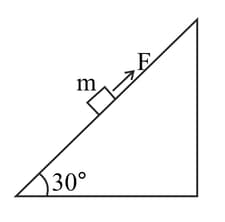
(a) work done against gravity
A block of mass is pushed up a surface inclined to horizontal at an angle of by a force of parallel to the inclined surface (figure). The coefficient of friction between block and the incline is If the block is pushed up by along the incline, calculate
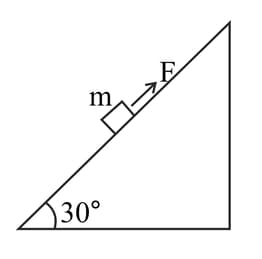
(b) work done against force of friction
A block of mass is pushed up a surface inclined to horizontal at an angle of by a force of parallel to the inclined surface (figure). The coefficient of friction between block and the incline is If the block is pushed up by along the incline, calculate
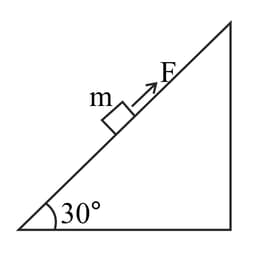
Use work done agianst grvaity as
(c) increase in potential energy
A block of mass is pushed up a surface inclined to horizontal at an angle of 30" by a force of parallel to the inclined surface (figure). The coefficient of friction between block and the incline is If the block is pushed up by along the incline, calculate
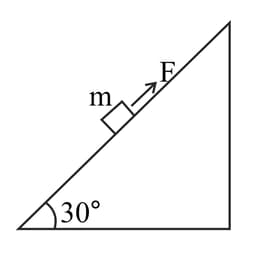
(d) increase in kinetic energy
A block of mass is pushed up a surface inclined to horizontal at an angle of 30" by a force of parallel to the inclined surface (figure). The coefficient of friction between block and the incline is If the block is pushed up by along the incline, calculate
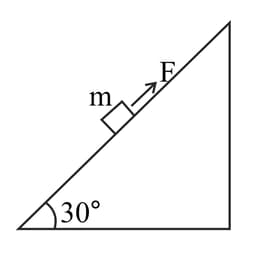
(e) work done by applied force.
A curved surface is shown in figure. The portion is free of friction. There are three spherical balls of identical radii and masses. Balls are released from rest one by one from A which is at a slightly greater height than . With the surface , ball has large enough friction to cause rolling down without slipping; ball has a small friction and ball has a negligible friction.
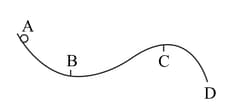
(a) For which ball is total mechanical energy conserved?
